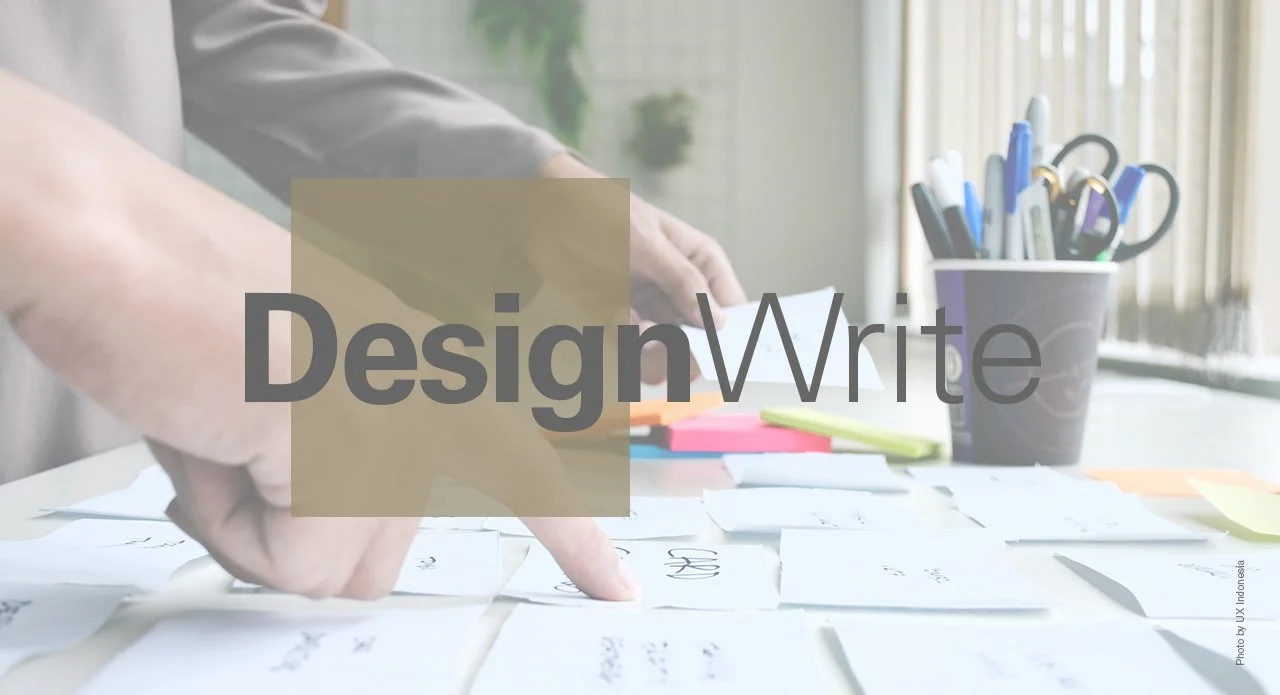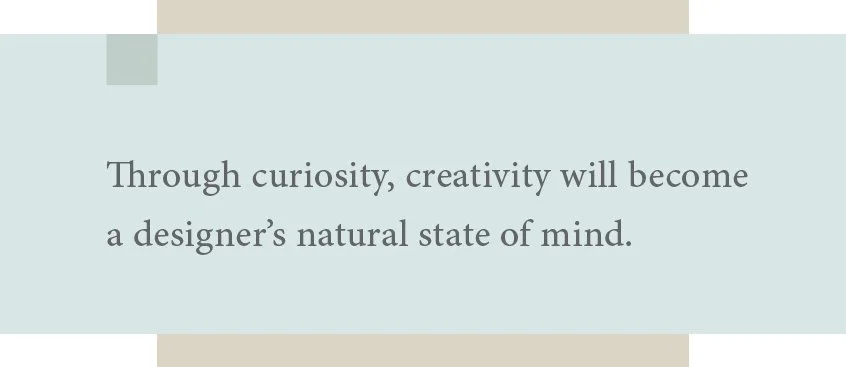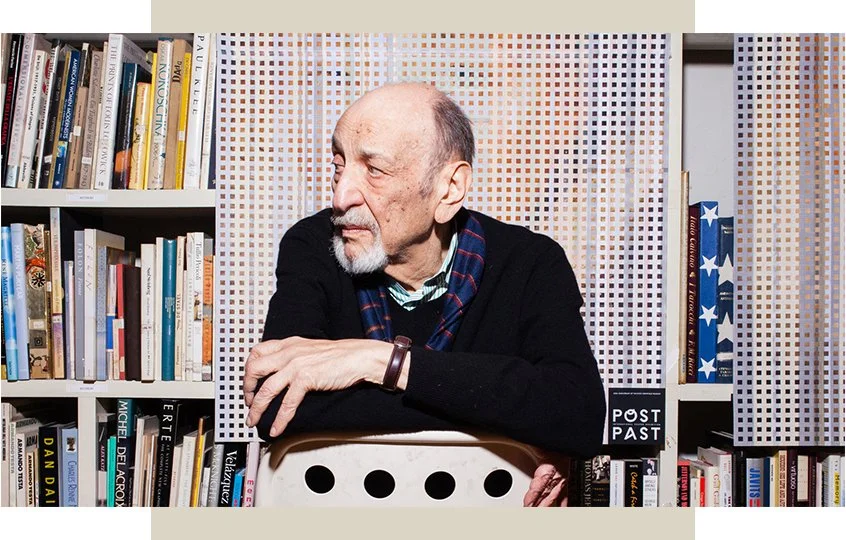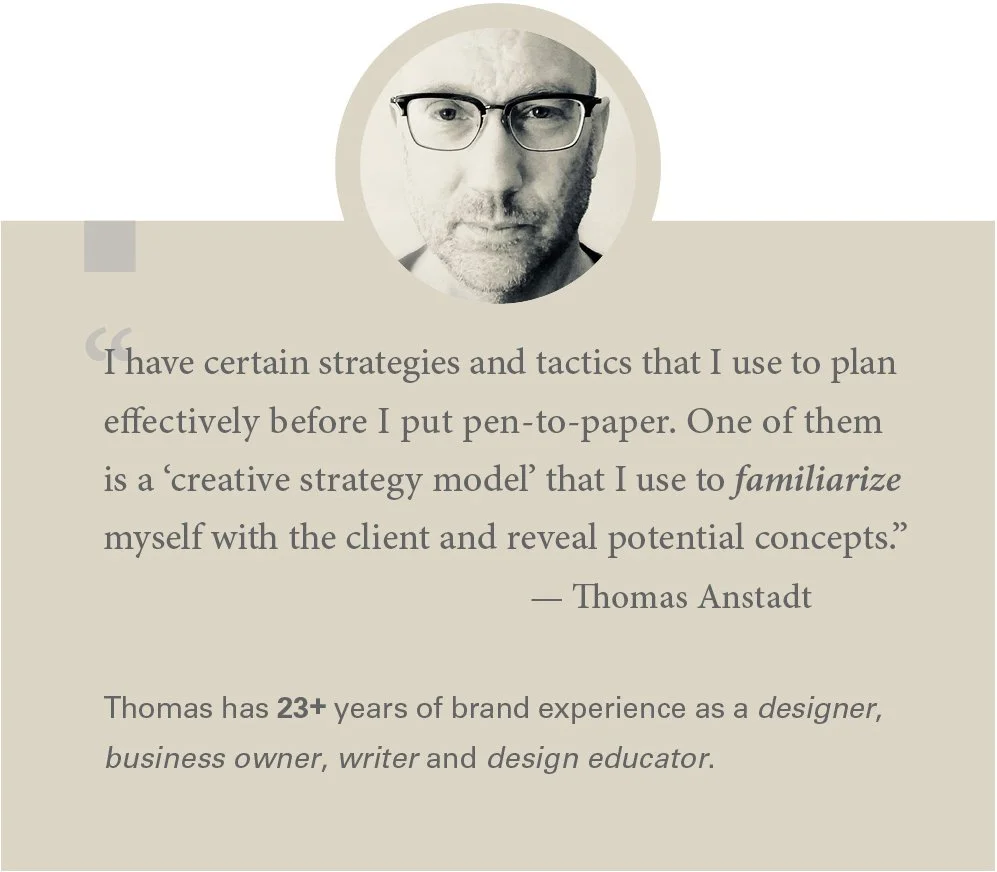Questioning for Better Design Solutions
“DesignWrite” was created by Thomas Anstadt to explore design and business-related topics.
Finding Intellectual Courage
In all honesty, observing the limitless ingenuity of some of our peers can be a humbling experience. They seem to have no boundaries when it comes to where their learning and imagination can take them. Creative individuals draw intellectual courage from within, resisting the temptation to settle for quick fixes, and seek deeper conceptual meaning. Questioning has become an essential aspect of their design investigations.
Originality, or creative thinking, refers to the ability to challenge traditional methods and develop new ideas or techniques to solve problems or meet needs. It involves a higher level of brain functioning that includes intuition, making unusual connections or associations, imagination, objectivity, and a willingness to change. In design, this means that solutions to problems should not be limited to what has already been praised in popular culture but should instead stem from deeper questioning, learning, and imaginative exploration.
This willingness to explore the unknown can lead to unique and creative outcomes that might not have emerged without that initial spark of curiosity.
Creative pioneers consistently strive to think beyond accepted principles and habitual perspectives, such as the mindset I have always done it this way. According to Milton Glaser, designers of all ages must continually stimulate their sense of awe and wonderment in the mundane things they do every day, including learning new techniques.
For instance, on one day, study the leaves on a local tree; the next day, appreciate your amazing legs and how they propel you forward; and on another day, admire the texture of the sidewalk. Learning to recognize the simple things in life can be a transformative experience. Then, apply that same sense of curious exploration to a design problem that requires an unfamiliar technique, such as analog collage or film. Ultimately, inquisitive thinking leads designers to develop creative solutions rather than merely repeating images from popular culture.
A Questioning Approach
An unquestioning mind offers little defense against the overwhelming number of poorly conceived solutions that flood the Internet. The rapid stream of popular culture images can overwhelm designers, making it difficult for even the most skilled among them to address the core issues of a problem. Ensuring that meaning is at the center of their work has become increasingly challenging. It is no surprise that some designers may resort to borrowing ideas and solutions from others; it often feels easier. However, over time, this approach can lead to a loss of the fulfillment and joy that comes from creating meaningful work, in favor of the short-lived pleasure of instant gratification.
Glaser's design work often blended elements of pop culture with a unique aesthetic sensibility, making significant contributions to visual art and design throughout his career.
Image: Milton Glaser in studio.
According to Glaser, there is more money, fame, and instant notoriety in imitating the trends of the day. But he also notes that most of what is viewed as popular today is hardly creative. If a designer wants to create something truly unique, trends are irrelevant; they need to look inside themselves and discover their creative wealth.
In contrast, a questioning mind allows designers to shift their perspective from being mere receivers and responders to becoming inquirers and creators. Creative pioneers invest time in various learning activities because they recognize that their profession demands a commitment to lifelong learning. Whenever a spark of interest arises, they delve into exploration.
Unlocking Creativity
According to renowned graphic designer Milton Glaser, teaching permits students to be playful and creative while sparking my inquisitive nature. This statement highlights a critical nuance of the design profession: it provides a variety of outlets for designers to explore, learn, and apply their knowledge in innovative ways. While the journey can be challenging, the profound sense of satisfaction derived from exploring new ideas is deeply fulfilling. For instance, engaging in hand-drawn typography not only nurtures a creative mindset but also stands in stark contrast to the often superficial experience of scrolling through social media posts.
Creative pioneers actively immerse themselves in a diverse range of learning activities, fully aware that their profession demands a commitment to lifelong learning.
Image: A designer uses multiple design tools.
Curiosity serves as a powerful catalyst for designers, influencing both their career longevity and overall well-being. When designers channel their energy into expressing their inner creativity, they contribute positively to their mental health and cognitive function. Engaging in creative activities has been shown to promote better brain health, stimulate blood circulation, and help to ward off various diseases. It becomes essential, therefore, for designers to intentionally carve out time each day dedicated to nurturing their creativity. Creativity could manifest in multiple forms, such as design exercises, mindfulness rituals, or any practices that stimulate a creative mindset.
Whether it is meditating to clear the mind, journaling to capture fleeting ideas, playing a musical instrument to evoke emotion, sketching to translate thoughts into visuals, collaging to explore mixed media, or experimenting with typography to play with forms and letters, designers must prioritize whatever practices resonate with them. By freeing themselves from the pressures and distractions of popular culture, they can rekindle their unique voice and focus on unlocking their inner creativity, ultimately enriching both their personal and professional lives.
In Conclusion
When designers value their insights and unique viewpoints, they start a journey toward genuine creativity that is both meaningful and innovative. It is essential to learn from past and present influences, design theories, industry standards, and famous works. However, distinguishing between exceptional design, which is grounded in thorough research and functionality, and poor design, which often follows fleeting trends in popular culture, is becoming more difficult.
By prioritizing their instincts, designers can create original work that resonates more authentically with their audience, deliver innovative solutions, and make distinctive design styles.
Popular culture can influence designers, making them mistakenly believe that designs without a solid purpose are credible. The credibility issue becomes heightened by social media, where 'likes' and shares can distort perceptions of what makes quality design. A design might go viral for its visual appeal or trendy features rather than its effectiveness or intended message. Therefore, designers must understand that the number of likes a design gets does not automatically prove its quality or importance.
To deal with these challenges, designers should maintain a questioning mindset. Questioning will help them think critically about the reasons behind their design choices and resist the overwhelming pressures of popular culture. By developing this self-reflective attitude, they can focus on their vision and not get distracted by trends that could undermine it. This dedication to authenticity and research-based practice enriches work life and enhances the overall quality of design. –end
Please feel free to email Thomas with questions or suggestions about the posted articles. I would appreciate the input.
And please, comment, like and share!






